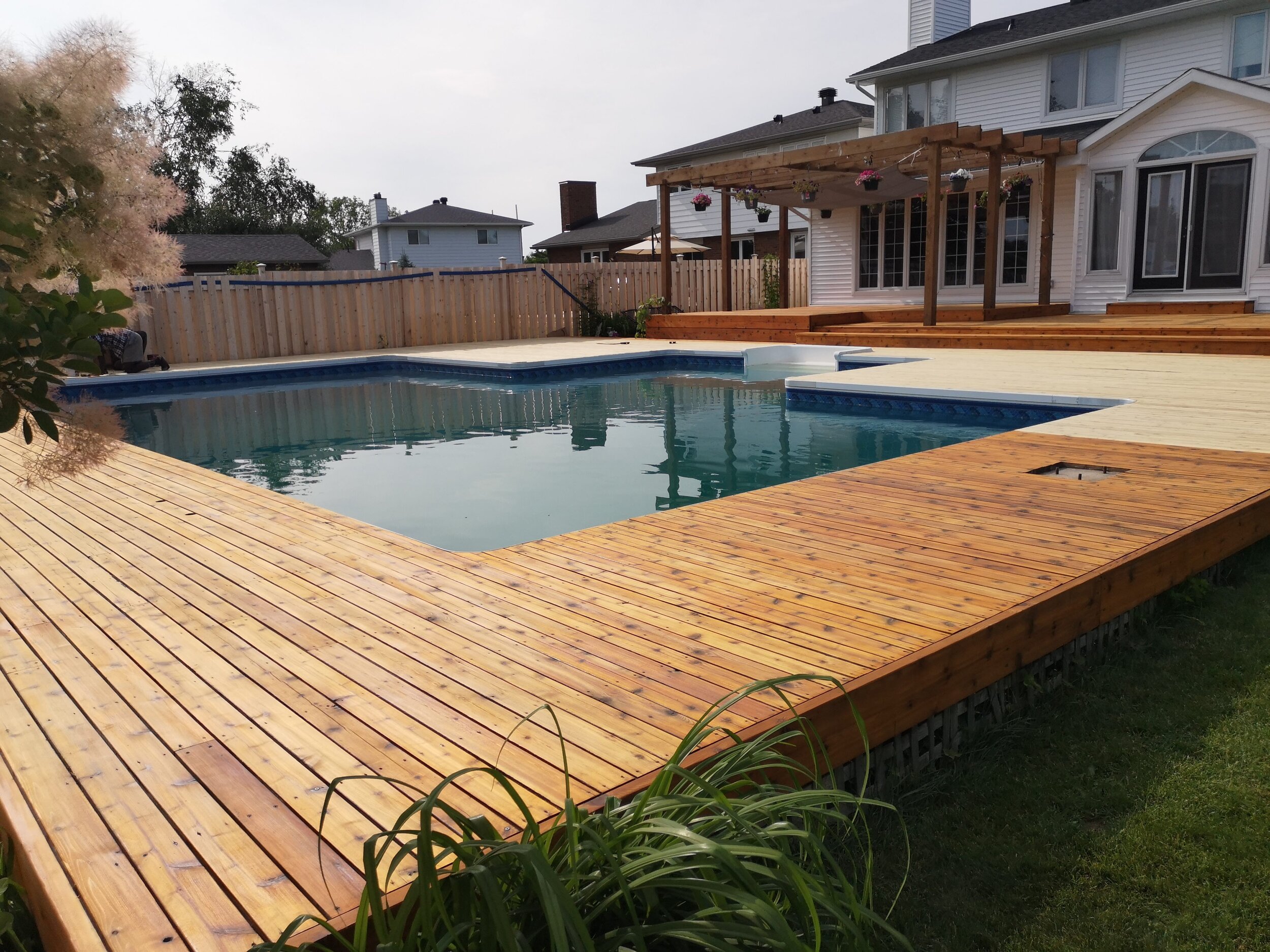Choosing the Right Discoloration for Your Fence: Tips and Factors To Consider
When it involves enhancing the look and maintaining of your fencing, choosing the ideal stain is essential. With a wide range of alternatives offered, it can be overwhelming to figure out which stain will best fit your needs. This overview will supply you with ideas and considerations to assist you make an educated choice. We will explore the different sorts of fence spots, factors to take into consideration before picking a discolor, ideas for preparing your fence for discoloration, and the differences between oil-based and water-based stains. In addition, we will certainly explore picking the best tarnish shade to complement your fence and improve your exterior room. By following these guidelines, you can make sure that your fencing remains protected and visually pleasing for several years to come.
Recognizing Various Sorts Of Fencing Discolorations

On the other hand, water-based discolorations are made from acrylic or latex and use a more refined shade to the wood. They produce a safety movie externally of the wood, protecting against moisture from leaking in and shielding against UV damage. Water-based spots are less complicated to cleanse up and have a faster drying time compared to oil-based spots. They are likewise much less most likely to split or discolor gradually.
Choosing between water-based and oil-based stains depends upon different variables, including personal preference, the preferred look, and the level of upkeep called for. Oil-based stains are suggested for fence high-traffic locations or those constantly subjected to severe weather. fence staining. Water-based discolorations, on the other hand, are a popular selection for fencings in suburbs where look and ease of usage are important
Understanding the distinctions in between oil-based and water-based spots assists property owners make a notified decision when selecting the appropriate discolor for their fence. Considering the specific needs of the fencing, such as its area, direct exposure to sunlight, and wanted aesthetic, will certainly make sure that the selected tarnish gives lasting defense and enhances the overall appeal of the fencing.
Elements to Think About Before Picking a Stain

An additional aspect to take into consideration is the type of wood your fence is made of. Various kinds of wood soak up discolorations in different ways, leading to varying degrees of shade intensity and toughness. Softwoods like want might need more constant discoloration compared to hardwoods like cedar or redwood. Additionally, particular timbers may be much more vulnerable to concerns like rot or insect problem, which might affect the option of discolor to protect the fence and secure.
The environment and climate conditions in your area ought to likewise be considered. You may require a tarnish that supplies additional security versus dampness and UV rays if you live in a location with rough winter seasons or high humidity. Also, if your fence is subjected to guide sunlight for long periods, a stain with UV inhibitors can help prevent fading and discoloration.
Finally, it's crucial to consider your preferred aesthetic. Different stains offer numerous shades and surfaces, enabling you to customize the look of your fencing (fence staining and sealing). Take into consideration the total design and design of your building, along with any type of regional regulations or homeowner organization standards that may determine the appropriate discolor colors
Tips for Readying Your Fence for Discoloration
Cleaning up the fencing is an essential action as it eliminates dust, gunk, and any previous layers that may conflict with the staining procedure. Scrub the surface area carefully, paying extra interest to areas with persistent spots or mold.
This action is crucial as discoloring a moist or damp surface area can lead to inadequate adhesion and an uneven surface. Make sure that the fencing is entirely dry prior to proceeding with the staining process.
Before discoloration, evaluate the fence for any damages, such as loosened boards or nails. Fix any kind of concerns to make sure that the fencing is structurally audio. Furthermore, take into consideration using a timber conditioner or brightener to the surface area. This item assists to open the wood pores, allowing the stain to pass through more effectively and evenly.

Comparing Water-Based and oil-based Stains
When choosing a tarnish for your fence, it is essential to contrast the qualities and advantages of water-based and oil-based stains. Both sorts of discolorations have their own advantages and factors to consider, so it is vital to comprehend the distinctions between them.
Oil-based spots are recognized for their toughness and resistance to use and tear. They permeate deeply into the timber, giving excellent security versus the components. They additionally enhance the natural charm of the timber by highlighting its grain and appearance. In addition, oil-based stains tend to last longer than water-based spots, making them a preferred selection for fencings.
On the various other hand, water-based stains are more ecologically friendly and simpler to clean up. They see this website have a lower VOC (unstable organic compound) web content, which suggests they launch less dangerous fumes right into the air. Water-based discolorations additionally completely dry quicker, permitting a quicker application and much less downtime. Nevertheless, they might not provide the same degree of security as oil-based spots, particularly in harsh climate condition.
Ultimately, the selection in between oil-based and water-based stains depends on your details requirements and preferences. When making your choice, think about elements such as durability, ecological effect, and ease of application. Consulting with a specialist or seeking referrals from professionals can additionally help ensure that you select the best stain for your fence.
Selecting the Right Spot Color for Your Fencing
The selection of a suitable stain color for your fence is an essential element of improving its aesthetic appeal and enhancing the overall design of your outdoor space (fence staining and sealing). The ideal discolor color can change a level, ordinary fencing into a striking centerpiece that adds depth and character to your residential or commercial property
When choosing a discolor shade for your fencing, it is essential to take into consideration the design and architecture of your home. If you have a classic or traditional design home, natural tones such as browns and neutrals can develop a warm and welcoming look. On the various other hand, if you have a modern or contemporary home, you could consider deciding for vibrant and vivid colors that make a statement.
Another variable to think about is the natural surroundings of your residential property. If you have a great deal of greenery, a tarnish color that complements the all-natural landscape, such as environment-friendlies or crimsons, can develop a harmonious and natural look.
Additionally, it deserves taking into consideration the upkeep required for different discolor shades. Lighter shades often tend to reveal dirt and wear more conveniently, while darker shades can conceal imperfections and require much less frequent touch-ups.
Eventually, the choice of tarnish shade for your fencing need to show your personal design and choices - fence staining and sealing. Put in the time to speak with and explore various options with experts if required, to ensure that you pick the excellent stain shade that boosts the appeal and charm of your fence
Conclusion
In conclusion, when it comes to choosing the best tarnish for your fencing, it is important to recognize the different kinds of discolorations readily available and take into consideration factors such as sturdiness and desired look. Picking the ideal tarnish color can improve the total looks of your fence.
We will check out the various types of fence stains, aspects to consider before choosing a tarnish, ideas for preparing your fencing for staining, and the distinctions in between water-based and oil-based discolorations.Distinguishing between oil-based and water-based stains is critical when comprehending different types of fencing stains. Water-based discolorations are much easier to clean up and have a much faster drying out time contrasted to oil-based discolorations. In addition, oil-based stains often tend to last longer than water-based spots, making them a prominent selection for fences.
In verdict, when it comes to choosing the best tarnish for your fence, it is important to recognize the various types of stains offered and think about variables such as toughness and desired look.